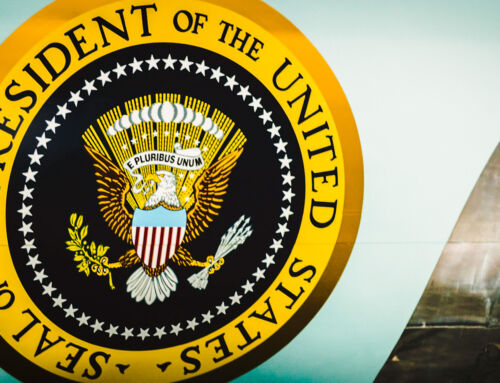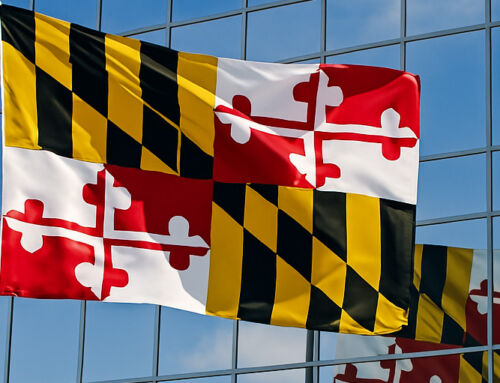View by Topic
Recent Articles
-
Migratory Bird Treaty Act Does Not Prohibit Incidental Take – AgainSaturday, April 19th, 2025
-
President Trump’s Bold Step to Rein in State Overreach in Climate ChangeSaturday, April 12th, 2025
-
Mandatory GHG Disclosures in Maryland Real Estate ContractsSaturday, April 5th, 2025
-
NYC Building Electrification Ruling is Interesting But Not a Game ChangerSaturday, March 29th, 2025
-
Greenpeace Ordered to Pay $667M in Blow to ActivismSaturday, March 22nd, 2025
View by Month/Year
“Green Building Law Update” Headlines
Recent Articles & News from
Stuart Kaplow’s blog
at GreenBuildingLawUpdate.com
- Migratory Bird Treaty Act Does Not Prohibit Incidental Take – Again April 20, 2025
- President Trump’s Bold Step to Rein in State Overreach in Climate Change April 13, 2025
- Mandatory GHG Disclosures in Maryland Real Estate Contracts April 6, 2025
- NYC Building Electrification Ruling is Interesting But Not a Game Changer March 30, 2025
Subscribe to the Green Building Law Update!
Stuart Kaplow brings his expertise and extensive experience to the table with his unique digital publication, "Green Building Law Update". Subscribers receive regular updates to keep them informed about important issues surrounding Environmental Law, Green Building & Real Estate Law, as well as the emerging demand for Environmental Social Governance (ESG).
Get fresh content through the lense of Stuart Kaplow's cutting-edge expertise, innovative commentary and insider perspective. Don't miss another issue! Subscribe below.

EPA Proposes First Greenhouse Gas Emissions Limits for Aircraft
Last Wednesday the Environmental Protection Agency proposed greenhouse gas emissions standards for airplanes used in commercial aviation and large business jets.
“This standard is the first time the U.S. has ever proposed regulating greenhouse gas emissions from aircraft,” according to EPA Administrator Andrew Wheeler.
And as much as I have railed against more and regressive environmental regulation in this blog, what is pragmatically proposed may be good for the planet and is definitely good for U.S. businesses. This action will align U.S. standards with the international carbon dioxide and nitrous oxide emission standards set by the International Civil Aviation Organization, making domestically manufactured aircraft able to be sold in the global marketplace.
This proposal also sets a precedent with the Trump Administration being the first to propose regulating greenhouse gas emissions from aircraft.
Typically, three out of four aircraft manufactured in the U.S. are sold overseas. These standards will help ensure consistent standards across the world, and most importantly allow U.S. manufactured planes, such as commercial and large passenger jets, to continue to be sold in the global marketplace.
The implementation process provides significant lead-time to designers and manufacturers of aircraft covered by the standards. The proposed GHG standards would apply to new type design airplanes on or after January 1, 2020 and to in production airplanes on or after January 1, 2028. They would not apply to already manufactured airplanes that are currently in-use.
There will be a 60 day comment period after the proposal publishes in the Federal Register.
Later in 2020, in a year when Cursed Energy is “out” and Dark Energy is “in” after EPA has promulgated that final rule with these aircraft fuel GHG standards, FAA will complete a subsequent rulemaking to enforce the standards. At that point, FAA could begin to certify airplanes of U.S. manufacturers. This process will take some time, and it is critical that EPA complete this part of the process so that the U.S. standards are in place well in advance of 2028, when the ICAO standards go into effect for in-production airplanes.
To put this issue in context, the ICAO says aircraft historically account for about 2% of the global carbon emissions (but not in the COVID-19 impacted 2020). Aircraft covered by the proposed rule account for 10% of all U.S. transportation GHG emissions and 3% of total U.S. GHG emissions.
Under the Clean Air Act, the Obama EPA found that emissions of GHGs from engines used in certain aircraft causes, or contributes to, air pollution which may reasonably be anticipated to endanger public health or welfare. Those findings in 2016 triggered a requirement for EPA to promulgate standards addressing GHG emissions from the fuel burned affected aircraft. This action begins the process of following through on that requirement.
U.S. airplane manufacturers, including Boeing, have been supportive of the proposed standard to avoid any limitations on their ability to sell their products abroad.
This action by EPA is instructive in that it teaches environmental regulation cannot be considered in a vacuum (.. it is suggested that Boeing, alone, represents about 1% of total U.S. GDP) and this proposed standard, based on practical international rather than larger philosophical considerations, and whatever its true ecological efficacy, keeps domestically manufactured aircraft flying in the global marketplace.
If truth be told, this law firm has in more than one instance advanced environmental legislation and driven regulatory changes that have allowed our clients to prosper by pursuing environmental risk as a business opportunity. There is nothing wrong with prospering while repairing the planet.









